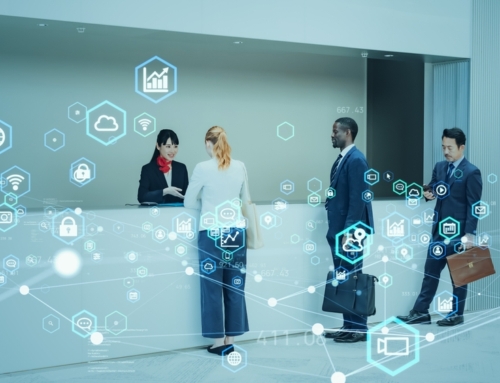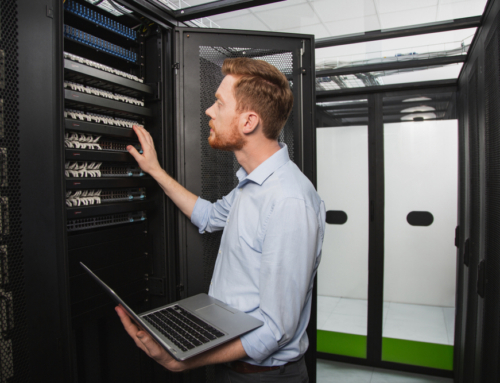By Tareq Ayub, Chief Technology Officer, Cloud5 Communications
Businesses spent more than a year adapting operational models, supporting remote workers, and adopting new technology to deal with the pandemic. Investments were made to accelerate business digitalization. With the economic recovery strengthening, companies must now align future technology investment with new business objectives.
Today, there’s an interplay of four macro themes driving business IT strategy:
- Customer experience: Customers want technology that enhances their well-being and delivers happier, more convenient life experiences.
- Workforce experience: Employees worked safely and productively at home for many months. Going forward, many businesses will continue to support a hybrid workforce.
- Smart products: New products are designed with embedded AI and automation that enhances user experience.
- Connected operations: Smart products and connected services collect data to provide feedback about customer preferences and product performance/defects, as well as insights for optimizing business processes.
I see five technologies playing a strategic role in business transformation going forward: Location agnostic experiences, ubiquitous connectivity, autonomous operations, zero-trust cybersecurity, and accelerated contactless technology. It’s a threat-filled world, so zero-trust security is integral to all four macro trends. Contactless technology and ubiquitous connectivity will contribute to innovative new products and services that drive a better customer experience. Autonomous operations will enable employees to work smarter and faster. Finally, location agnostic experiences will enable businesses to engage their employees and customers equally well in person and remotely.
Location agnostic experiences
The internet and cloud solutions make it possible to have the same satisfaction of experience regardless of location. One of the biggest issues in location agnostic experiences right now involves the hybrid workplace. Employers need the right technology to ensure the experience of remote workers can be just as productive and collaborative as the in-office experience.
Many industries also need to address location agnostic experiences from the customer viewpoint. For example, prior to the pandemic, hotels enjoyed total conference and banquet RevPAR (excluding rooms) of $40.15 in 2019. In 2020, this plummeted to $9.28. After a year of mediocre virtual meeting experiences, many professionals are eager to return to onsite events. However, it’s difficult to predict if businesses will increase travel budgets to pre-pandemic levels, and many people will continue to prefer virtual attendance. Hotels will need to use technology such as augmented reality/virtual reality (AR/VR) to create hybrid meetings that offer a more tangible experience for virtual attendees.
Ubiquitous connectivity
Businesses continue to accelerate adapting to the new normal, by reinventing business models and supply chains and innovating new products. They cannot operate without ubiquitous connectivity; especially as focus continuous to be on hyper personalization, automation, and running operations with a reduced labor force. 5G and Wi-Fi 6 will continue to evolve as two connectivity standards with a strong symbiotic relationship. Due their respective benefits in bandwidth, communication architecture, security, and costs, the relationship will enable the connectivity required to support both static and mobility scenarios; 5G will continue to become the baseline for external connectivity scenarios, and Wi-Fi 6 will be the choice for internal connectivity scenarios. As the transition to this hybrid connectivity model becomes the standard, seamless transition between these connectivity choices will continue to be developed using approaches such as Open Roaming. Mobile device providers will integrate the capability based on intelligent rules.
In all cases, the right fit will deliver ubiquitous connectivity; while Wi-Fi 6 may work for operations such as back of house or in-room, 5G may augment a large, multi-site environment. In some cases, Wi-Fi and 5G may be used simultaneously. For instance, a connected vehicle may offer in-vehicle Wi-Fi for internal devices, while the vehicle itself would connect to a 5G cellular network. One of the most prevalent use cases enabled by the hybrid connectivity model supports the enhanced development of digital replicas (also known as digital twins) and takes advantage of AI for learning and interacting. Connected “Things” by their nature create a digital thread that transitions in and out of different contexts enabled by the connectivity options; Digital replicas will continue to increase the adoption of automation in new scenarios through increased awareness and data.
Ubiquitous connectivity is the undergird for endless business possibilities. Both 5G and Wi-Fi 6 will enable the development of countless new innovations, supporting digital business models and new types of products and services.
Autonomous operations
Currently, the U.S. is experiencing a worker shortage across many industries. But companies are also facing a longer-term skills gap in the workforce. Businesses will have to accomplish more with fewer workers, but how? Autonomous operations leverage machine learning operations to incorporate AI across nearly every area of the business. AI automation can execute tasks and provide personalized customer experiences without human intervention.
Examples from the hotel industry include AI-enabled chatbots for guest service, AI robots serving as concierges and butlers, and delivery robots for snacks and other amenities. Amazon’s heavy investment in robotics is enabling the company to pursue the “dark warehouse”—a lights out facility that doesn’t require humans at all. Instead, robots will stock shelves and pick orders, driverless pallet trucks will move goods, and automated packing conveyers with IoT sensors will cut and glue boxes to assemble orders for delivery.
Enhanced Zero Trust (with sense and respond)
From a cyber security perspective, the distributed workforce, distributed operations, and an ever-increasing footprint of connected “things” create a greatly expanded attack surface. Users continue to be the weakest link for major attacks especially those that use social engineering techniques. Ransomware attacks are increasing, and criminals are targeting businesses of all sizes. Cybercriminal gangs have launched increasingly sophisticated and bold supply chain attacks using advanced malware that capitalizes on self-learning concepts. And it’s no longer enough to guard your own perimeter carefully; now attacks can come in through a partner or supplier with a lax security posture. CIOs are tasked to support a hybrid workforce along with a ballooning number of connected services and devices while keeping IT infrastructure safe.
To combat the growing threats, businesses need to ensure processes adopt cyber security policies that continue to embrace the well-known “zero-trust” across all information exchange zones, while increasing their ability to sense and respond across the entire IT supply chain. This can only be achieved through increasing automatic analysis of security-relevant data in real time across three integrated areas: active monitoring for malware and communication, continuous vulnerability analysis, and log event correlation with advanced analytics. Due to the amount of information and number of vectors, AI will continue its presence in systems, like vulnerability scanners, intrusion detection systems, sandboxing technologies, threat intelligence, and correlation engines.
No business is immune to cyber-attacks, so every business must approach cyber security as an area of ongoing investment and learning. The foundation for success starts with a zero-trust security posture, supported by well-defined processes and an ever-evolving set of technology tools.
Accelerated contactless technology
While contactless technology has had its fair share of adoption in the last few years, primarily influenced by a shift to self-service, contactless re-defines frictionless experience by integrating context with technology. Mobility (including wearable technology) will continue to be the key enabler for contactless experience design. As an example, Amazon’s “Just Walk Out” technology integrates mobility (or wearable technology), sensors, and payment systems to eliminate contact and create a frictionless shopping experience in any type of retail store. Disney uses its MagicBand sensor-enabled wristbands to provide faster, more convenient access to theme parks entrances, rides, and photo experiences. The band also unlocks the door to the customer’s Disney Resort hotel room and can be used for contactless purchase of food and merchandise in the parks that is charged to the room.
If automatic context detection is not an option, gesture control and facial recognition are options for triggering actions such as opening door locks or using elevators. Startup Insider Navigation is using mobile phones to provide AR/VR experience for scenarios such as way finding, virtual digital signage, and other immersive experience design. Biometrics such as facial recognition will have roles to play in healthcare to monitor and analyze patient condition remotely, in law enforcement to identify suspects, and in hospitality, where a returning customer could start the check in process simply by walking into the lobby.
Voice recognition will be integrated into many engagement platforms to help complete user’s tasks. In the office, knowledge workers will set aside computer keyboards and complete tasks at the speed of voice. Vocalis Health, an Israeli startup, is in trials to see if voice recognition can detect which patients have COVID-19. Any situation in which an employee needs to use both hands to work but may also need additional information or tools will be greatly aided by voice combined AR/VR. Imagine working in an industrial setting and being able to access schematics through AR and hear step-by-step instructions. In home health care, voice recognition will open tremendous new experiences for people with limited mobility or blindness.
Reimagining technology in the next normal
Businesses have just come through one of the most challenging years in memory. But there’s no time to rest. Technology is enabling exceptional products and experiences that will catapult a few players in each industry far ahead of their competitors. Finding the right mix of the five tech trends above for your IT investment will be critical to success in this digital era.
In the coming weeks, Cloud5 will publish a series of articles to provide more in-depth analysis of each of the tech trends overviewed in this article. In my next article, we’ll focus in on contactless technology.




